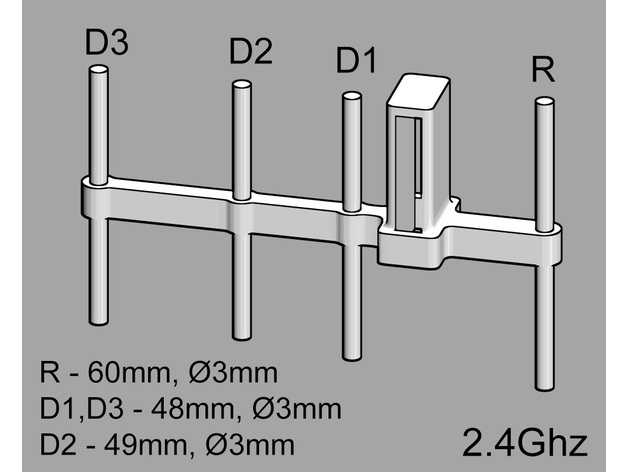Hello Guys, yesterday I thought to myself I'm gonna make me one of those Yagi Uda antenna adapters for my Mavic Mini controller even though I don;t have a 3D printer! And I did, and it actually works! I used an online Yagi Uda calculator, and I just chose my options, I made a 11.8 dBd gain directional Antenna an Yagi Uda one. It has one reflector at the base, and then it has a place where the antenna would be(the active element) and lastly I have 8 directors!!! So it is very directional, but I only need it for long distances, and so the "beam" of radio energy waves will be spread up far enough so aiming will not be an issue. It is a Yagi Uda adapter antenna for 5.8ghz band and it looks pretty good actually.
I'll post pictures of it when I gets home from work, so you guys can see that I took real real good care to get all the measurements to be correct, the spacing and everything to be really well measured! I used paper clips as my metal, those thin ones! and I used a wooden coffee-mixer stick as the boom base. It took me about 45 minutes to make and I did really take super great care to get all the dimensions correct! I tried it through a few walls, and it WORKED!!! I was totally BLOWN AWAY! I mean some paper clip pieces on a tiny piece of wood all spaced out in a special pattern with special sizes & that gives my CE version Mini the ability to have connection through my whole residential building! I first tried taking my Mini to another room in my apartment. I disabled the FCC Hack, so my Mini was all stock transmission for my region. The crazy thing is that without the Yagi Uda adapter antenna I could control my Mini throughout my whole apartment, from any room to any room! I had to go out of the building downstairs and go all the way to the opposite side to lose connection! Yagi Uda adapter antenna actually made it possible for my Mini to get connection, and a very good one also! So I'm completely blown away by what some small pieces of metal, paper-clips can do when arranged correctly!
I will make a video tonight, to demonstrate how effective this Yagi Uda adapter antenna really is, especially the one I made, 11.8dBd gain, according to the Yagi Uda online calculators! I will do some more testing but I think that I may have finally found the cheap, simple, elegant solution to extending my range and improving m signal quality in the city!
Edit: attached are the pictures of my home, handmade 5.8ghz Yagi Uda antenna adapter!!!
View attachment 94548View attachment 94549View attachment 94550
cool cool















